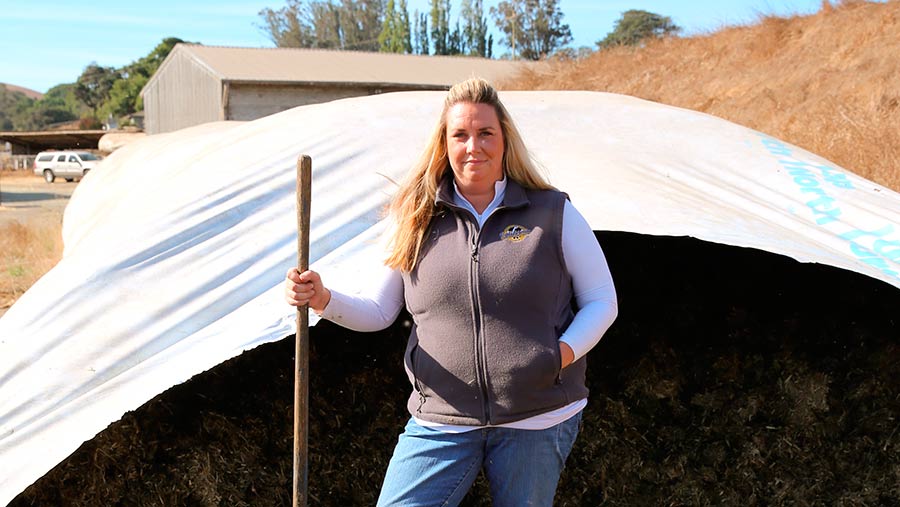Farmer Focus: 10 months’ work and so much waste
 Jessica McIsaac ©Brianna Frey
Jessica McIsaac ©Brianna Frey All year we have talked about the process we go through to prepare for a new crop. From the steps, to the equipment and technologies, to the types of seeds chosen.
Choices are made and preparations done nearly 10 months before feed is harvested. Back in the autumn we chose to plant barley, triticale and ryegrass, all of organic origin. Then, through the winter, we experienced a “100-year storm”.
Just four weeks ago we made our harvest of grass silage off 265 acres (107ha), spanning two counties. It is an entire year’s worth of cattle feed, on which our farm income hinges.
See also: Read more from our Livestock Farmer Focus writers
The harvest was done by a local contractor who cuts, chops and hauls it home. On our home site we weighed each load to get a precise weight of the crop.
The rain did well for us and our crop was heavy. Importantly, our harvest company was able to chop our crop at the optimal time. So the combination of a lot of feed and a good chopping time made us really excited about the quality of feed we were going to have.
However, the forage just kept coming and coming and we were running out of space. This could be described as a good problem, but it meant that once we had covered the silage pit we were short of tyres to compact the tarpaulin and keep out the air.
Another issue was that the face of our pit extended over soil because it reached far beyond the normal area. The nutrition company we use told us that our pile was so large that our entire new crop had been exposed to the air.
The air will leave nearly a foot of rot around the top of our entire pit. This waste will cost us time and money and will risk the health of our animals if eaten, particularly the forage on the soil, which contains costridials.
After 10 months of work, decisions and a lot of money, it’s sad that so much feed will be wasted. But with the work of our team we will make good decisions to be able to safely feed this crop throughout the next year.
Jessica McIsaac milks 350 pedigree Holsteins in Petaluma, California, with her husband Neil. They sell organic milk and also have 6,000 laying hens.
